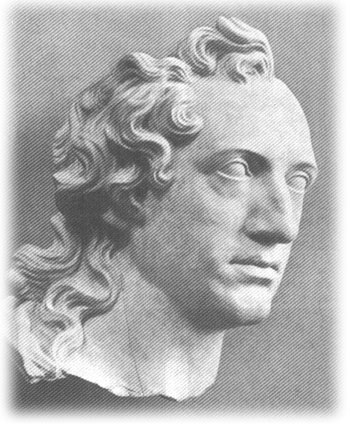Few people outside of academic circles know of Johann Wolfgang von Goethe as more than the author of Faust, or possibly as a poet and/or novelist. Although his claim on immortality is based on his great literary achievements, Goethe himself considered his scientific work more important:
"I do not pride myself at all on the things I have done as a poet. There have been excellent poets during my lifetime, still more excellent ones lived before me, and after me there will be others. But I am proud that I am the only one in my century who knows the truth about the difficult science of color",
he often told his secretary Eckermann in the last years of his life. For over 50 years, Goethe did research in botany, comparative anatomy, color and optics, meteorology, geology, and many other areas of natural history.

Although Goethe made a number of interesting discoveries - for example, he found the intermaxillary bone in the human jaw, a bone which had been known only in animals - his achievements have not been given much consideration by the scientific community at large. The prevailing sentiment among his contemporaries was one of condescension and even ridicule; it was felt that he should stick to what he knew how to do well, namely writing poems, novels, and plays. More recently however, scientists such as molecular biologist Brian Goodwin, who writes in How the Leopard Changed Its Spots:"The ideas I am developing in this book are very much in the Goethean Spirit", or key figures in the development of Complexity Theory such as Mitchell Feigenbaum and Albert Libchaber, have expressed their admiration and respect for Goethe's scientific achievements. Another example is Werner Heisenberg, who stated in a lecture of 1942:
"What we can still learn from Goethe today is that we cannot, at any cost, allow all other organs or capacities to atrophy in favor of the one, the rational analysis: it is perhaps more important to lay hold of the reality with all those organs which we are given and thereby allow the reality to mirror that which is most essential, (Goethe's) 'the One, the Good, the True' ."
The significance of Goethe's legacy lies in his methodology which offers a complement and alternative to positivistic reductionism and its fragmentation of knowledge.Relying on the trustworthiness and accuracy of our senses, Goethe's methodology proceeds from exact observation of the phenomenon in question and develops what he calls "exact sensorial imagination", also described as "re-creating in the wake of nature". The first, observational, stage is characterized by an active, attentive seeing, rather than our habitual passive reception of sense-data. The eyes become fingers as it were, exploring the phenomenon - a plant, for example - from the inside as well as the outside. The second stage, exact sensorial imagination, involves an almost meditative exercise: with closed eyes, an exact image of the observed object is brought forth inwardly.Without imposing subjective mental constructs or preconceived theories, Goethe's method extends and deepens our experience of the phenomenon until it reaches an element not given externally to sense-experience. This is the connection of the phenomenon, its relationship to others and ultimately to the universe at large, which is intrinsically lawful and ordered. The meaning of a thing, its essence, lies in its relationship to other things and cannot ever be defined in isolation. Thus, the Goethean way of observing the world eliminates distance. One cannot be an onlooker any more, observing nature as removed and different from oneself. By taking away these boundaries, by experiencing nature through an intuitive rather than intellectual mode of thinking, we cannot help but develop an attitude of respect and responsibility.
I include here a paper I wrote for a class on Teillhard de Chardin and Loren Eiseley, where I tried to introduce Goethe's ideas in a playfull manner by describing an imaginary meeting of the two men. In several letters to his beloved Charlotte von Stein, Goethe tells of the stimulating days he spent with his visitor from the far-distant future. Likewise, I include a few journal-entries written by Lauren Eiseley when he found himself transported back in time to the year 1817. The discovery of these documents in 1999 caused quite a stir in Weimar, where the newspapers went on and on about Goethe's Meeting With Lauren Eiseley.
In another paper, I compare Dante's Divine Comedy and Faust -- A Tragedy
Back to Main Page